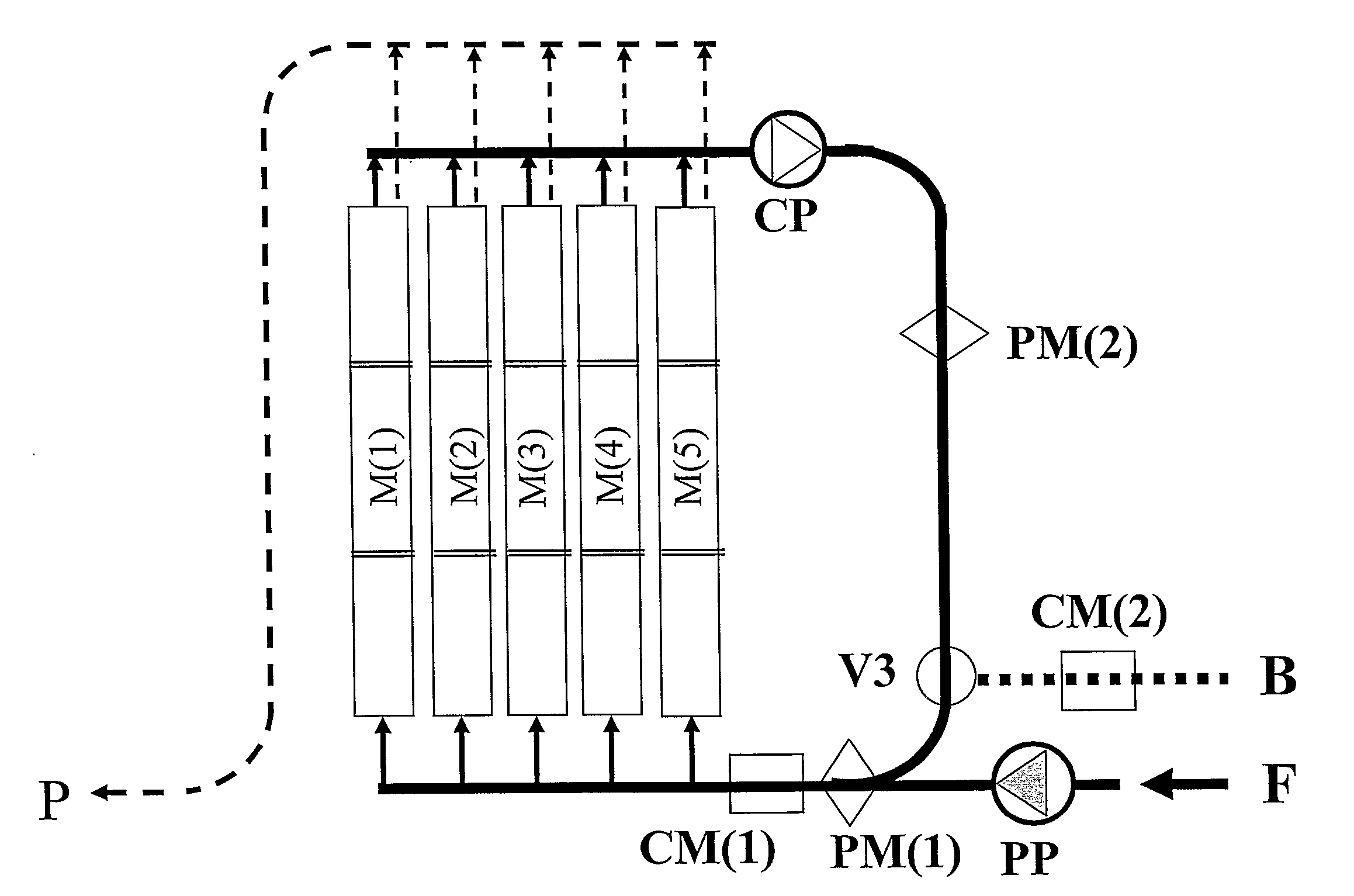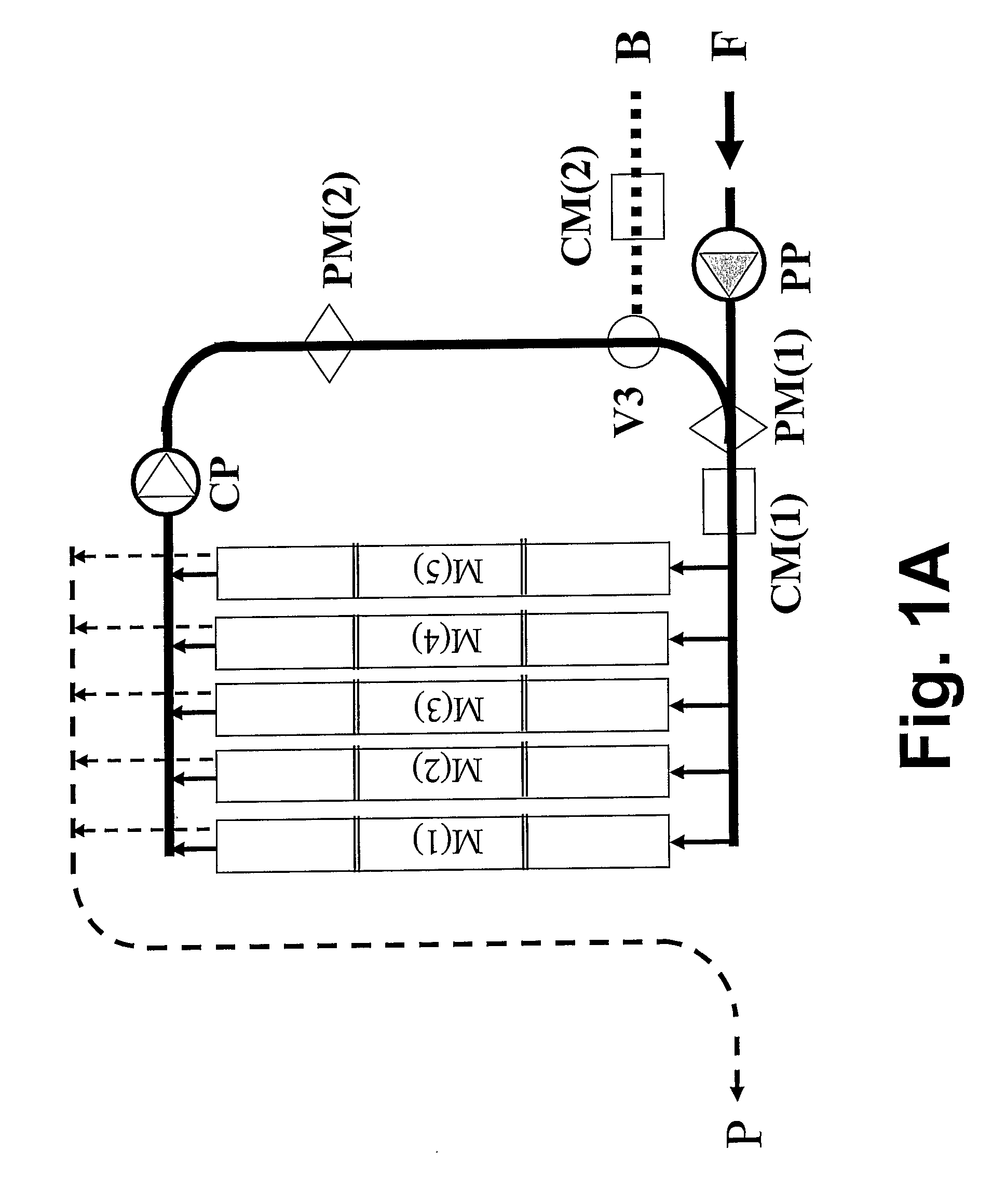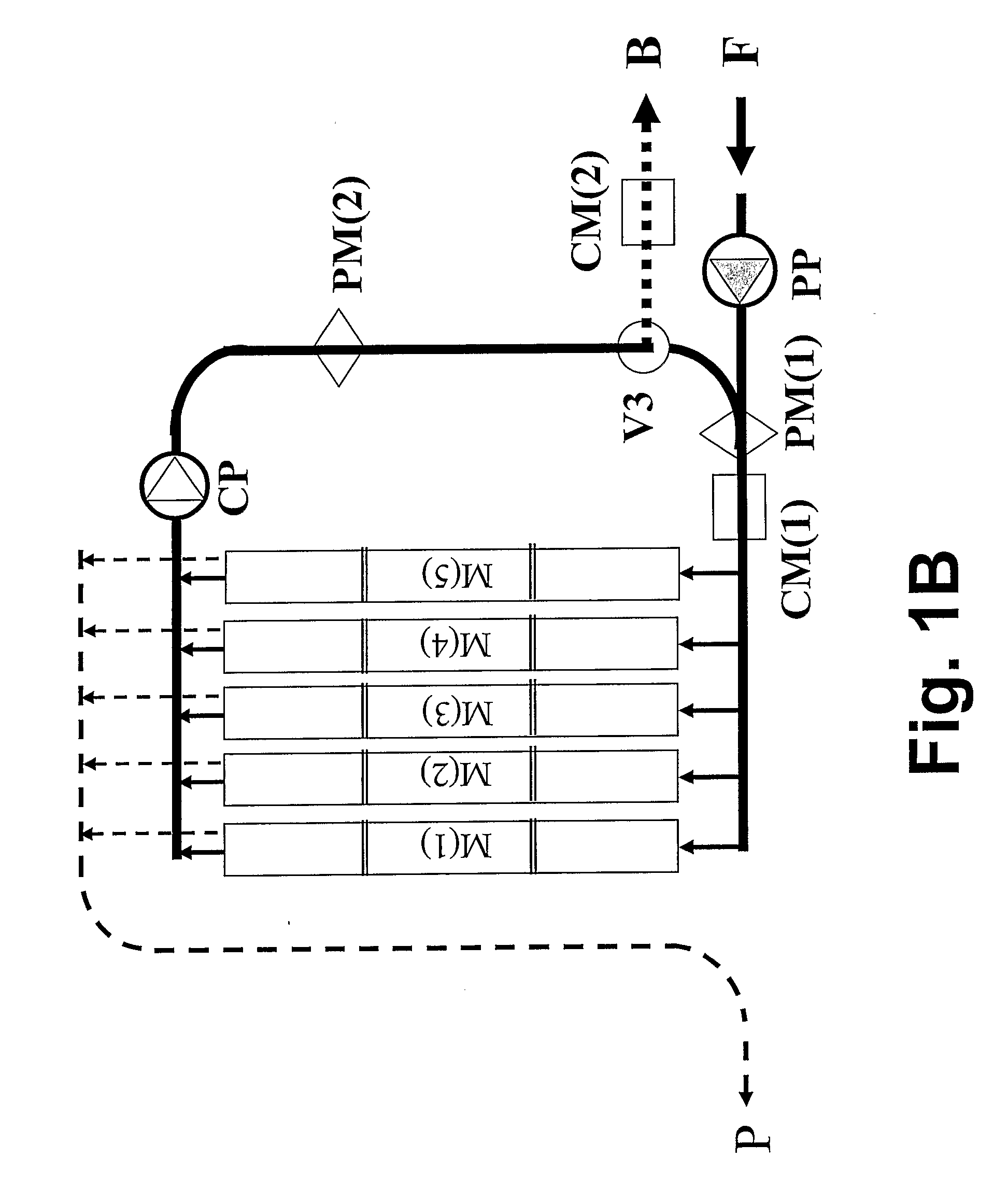Continuous Closed-Circuit Desalination Apparatus Without Containers
a desalination apparatus and closed-circuit technology, applied in the direction of separation process, membrane, treatment water nature, etc., can solve the problem of two relatively large capacity tanks, and achieve the effect of reducing the number of membrane elements, simple and inexpensive design, and few power components
- Summary
- Abstract
- Description
- Claims
- Application Information
AI Technical Summary
Benefits of technology
Problems solved by technology
Method used
Image
Examples
example
[0039] The preferred embodiment of the inventive method is exemplified with a high desalination recovery (85%-95%) of a typical SWRO permeate feed with TDS of 391 ppm that contain B (1.2 ppm) and Mg (3.4 ppm). This example illustrates, amongst others, the application of the inventive method for the reduction of Boron level in SWRO permeates to an excepted level (<0.5 ppm) by international standards.
[0040] The exemplified apparatus is of the schematic design displayed in FIG. 1 (A and B) with five 8″ pressure vessels (modules) each of three membrane elements. The performance specifications under Test Conditions (TC) of the low energy commercial type elements considered in the context of the exemplified apparatus are as followed: Production, 44 m3 / day; Feed, 2,000 ppm NaCl; Pressure, 150 psi; Net Driving Pressure (NP), 8,8 bar; Temperature, 25° C.; and Maximum Element Recovery (MER), 15.0%. The exemplified apparatus is operated under variable pressure conditions of fixed NDP (8.8 bar...
PUM
| Property | Measurement | Unit |
|---|---|---|
| Fraction | aaaaa | aaaaa |
| Pressure | aaaaa | aaaaa |
| Salinity | aaaaa | aaaaa |
Abstract
Description
Claims
Application Information
 Login to View More
Login to View More - R&D
- Intellectual Property
- Life Sciences
- Materials
- Tech Scout
- Unparalleled Data Quality
- Higher Quality Content
- 60% Fewer Hallucinations
Browse by: Latest US Patents, China's latest patents, Technical Efficacy Thesaurus, Application Domain, Technology Topic, Popular Technical Reports.
© 2025 PatSnap. All rights reserved.Legal|Privacy policy|Modern Slavery Act Transparency Statement|Sitemap|About US| Contact US: help@patsnap.com



